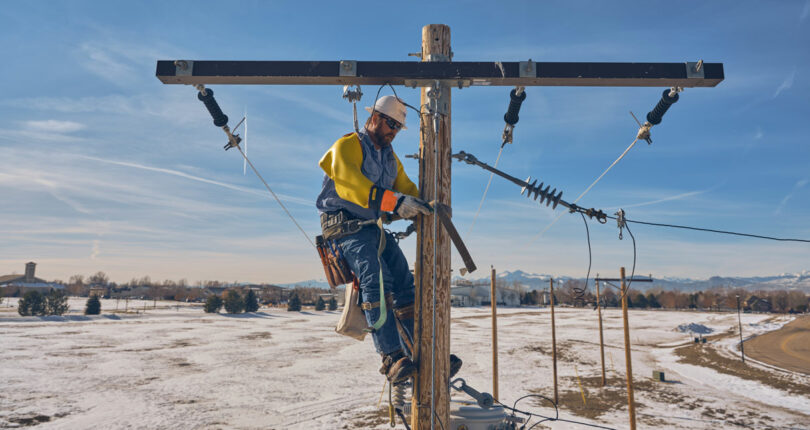As I write this piece in mid-January, many parts of Colorado are experiencing significant snowfall and brutally cold weather. For some 80 hours, the temperatures east of the Continental Divide dipped below zero, and in many parts of eastern Colorado, the windchill hit the minus 30 degree mark.
Extreme weather is one example of a condition that can impact the resiliency of power grids. You might be surprised to learn that “resilience” isn’t exactly used to describe the major changes affecting electricity service. Instead, it’s about actionable steps electric utilities are taking to keep power flowing.
Although the terms “resiliency” and “reliability” are similar, reliability is a measure of electricity availability, while resiliency refers to the ability of electric grids to withstand stress.
More powerful and frequent natural disasters call for all electric utilities to learn new ways to do their job. These days, maintaining the power grid means planning for sudden and large-scale disruptions.
If you’re not sure what the difference is between “reliability” and “resilience,” you’re not alone. Even utilities can have slightly different definitions. But most tend to agree that grid resiliency is the ability to withstand and recover from disruptive events and to predict and adapt to ensure consumers have the reliable power they need in a time of new energy challenges.
A less-formal definition from the Future Electric Utility Regulation Advisory Group compares electric service to a boxing match: “Reliability is when you can take a punch. Resilience is how fast you get up off the canvas after you’ve been hit hard.”
While most of us can stay inside and avoid dangerous extreme weather conditions, there are many Coloradans whose occupations require them to brave the elements. Among these folks are the many ranchers, farmers, and truckers we depend on to keep the shelves in our stores stocked. It also includes the hundreds of utility workers who keep the electricity and natural gas flowing to light and heat our homes.
Electric co-op lineworkers are used to working in harsh conditions and at all times of the day and night, but working in heavy snow and bitter cold is especially difficult. Mechanical things that work reliably in milder weather are susceptible to breaking in cold weather; repairs to that equipment can be extremely difficult under those conditions. Lineworkers have to be ready to answer calls to restore outages in the middle of the night and during difficult travel situations.
Electricity is more important than ever to our daily lives. At the same time, severe weather can result in widespread outages that threaten the comfort and safety of many co-op consumers. Electric co-ops are ready to get back up off the canvas quickly: They’re burying more power lines underground, and they’ve developed outage recovery plans that get the most essential services back online first.
And while there is always an urgency to restore power as soon as possible, especially in extreme weather conditions as we saw last month, the first priority of every Colorado co-op and every lineworker is the safety of their crews as they perform this important work. There are no shortcuts when it comes to safety. All lineworkers must follow the lifesaving safety rules, especially during extreme conditions.
Colorado co-op lineworkers, as well as all utility workers and others who keep us safe and warm during bitterly cold weather, deserve a special thanks from all of us. They are true heroes; please say “thanks” the next time you have a chance.

